Drugs and the Military
The drug problem – like the civilian situation from which it directly derives – is running away with In March, Navy Secretary John H. the services. Chafee, speaking for the two sea services, said bluntly that drug abuse in both Navy and Marines is out of control.
In 1966, the Navy discharged 170 drug offenders. Three years later (1969), 3,800 were discharged. Last year in 1970, the total jumped to over 5,000.
Drug abuse in the Pacific Fleet – with Asia on one side, and kinky California on the other – gives the Navy its worst headaches. To cite one example, a destroyer due to sail from the West Coast last year for the Far East nearly had to postpone deployment when, five days before departure, a ring of some 30 drug users (over 10 percent of the crew) was uncovered.
Only last week, eight midshipmen were dismissed from the Naval Academy following disclosure of an alleged drug ring. While the Navy emphatically denies allegations in a copyrighted articles by the
Annapolis Capitol that up to 12,000 midshipmen now use marijuana, midshipman sources confirm that pot is anything but unknown at Annapolis.
Yet the Navy is somewhat ahead in the drug game because of the difficulty in concealing addiction at close quarters abroad ship, and because fixes are unobtainable during long deployments at sea.
The Air force, despite 2,715 drug investigations in 1970, is in even better shape: its rate of 3 cases per thousand airmen is the lowest in the services.
By contrast, the Army had 17,742 drug investigations the same year. According to Col. Thomas B. Hauschild, of the medical Command of our Army forces in Europe, some 46 percent of the roughly 200,000 soldiers there had used illegal drugs at least once. In one /35/ battalion surveyed in West Germany, over 50 percent of the men smoked marijuana regularly (some on duty), while roughly half of those were using hard drugs of some type.
What these statistics say is that the Armed Forces (like their parent society) are in the grip of a drug pandemic – a conclusions underscored by the one fact that, just since 19168, the total number of verified drug addiction cases throughout the Armed Forces has nearly doubled. One other yardstick: according to military medical sources, needle hepatitis now poses as great a problem among young soldiers as VD.
At Ft. Bragg, the Army’s third largest post, adjacent to Fayetteville, N.C. (a garrison town whose conditions one official likened to New York’s "East Village" and San Francisco’s "Haight-Ashbury") a recent survey disclosed that 4% (or over 1,400) of the 36,000 soldiers there are hard-drug (mainly heroin and LSD) addicts. In the 82nd Airborne Division, the strategic-reserve unit that boasts its title of "America’s Honor Guard", approximately 450 soldier drug abusers were being treated when this reported visited the post in April. About a hundred were under intensive treatment in special drug wards.
Yet Bragg is the scene of one of the most imaginative and hopeful drug programs in the Armed forces. The post commander, LGen John J. Tolson, and the 82nd Airborne’s commander, MGen George S. Blanchard, are pushing "Operation Awareness," a broad post-wide program focused on hard drugs, prevention, and enforcement.
Spearheading Operation Awareness is a tough yet deeply humane Army chaplain and onetime Brooklyn longshoreman, LCol John P. McCullagh. Father McCullagh has made himself one of the Army’s top experts on drugs, and was last year called as an expert witness by Harold Hughes’s Senate Subcommittee on Alcohol and Narcotics.
No Street Is Safe
One side-effect of the narcotics flood throughout the services is a concurrent epidemic of barracks theft and common criminality inside military or naval bases which once had the safest streets in America.
According to the personnel chief of one of the Army’s major units, unauthorized absence, historically the services’ top disciplinary problem, is now being crowded by the thefts. Barracks theft destroys trust and mutual loyalty among men who ought to be comrades and who must rely absolutely on each other in combat. It corrodes morale and is itself an indicator of impossible conditions in a fighting unit.
At Ft. Bragg, primarily because of addict thieves, soldiers in many units cannot even keep bedding on their bunks in barracks. After what used to be reveille, they strip their bunks of bedding and cram it away under lock and key with whatever valuables they dare keep on hand.
Radios, sports gear, tape decks, and cameras – let alone individual equipment – are stolen on sight. Unlocked cars, on the manicured streets of this fine old post, are more likely to be stolen than not. Fayetteville, according to soldiers, abounds with off-post fences who will pay pennies for Army blankets and higher amounts for just about anything else.
Unhappily, conditions at Ft. Bragg are not unusual.
Soldier muggings and holdups are on the rise everywhere. Ft. Dix, N.J., has a higher rate of on-post crime than any base on the East Coast. Soldier muggings are reported to average one a night, with a big upsurge every pay-day. Despite 450 MP’s (one for every 55 soldiers stationed there – one of the highest such rations in the country) no solution appears in sight.
Crimes are so intense and violent in the vicinity of an open-gate "honor system" detention facility at Ft. Dix that, according to press reports, units on the base are unwilling to detail armed sentinels to man posts nearby, for fear of assault and robbery.
Desertions and Disasters
With conditions what they are in the Armed Forces, and with intense efforts on the part of elements in our society to disrupt discipline and destroy morale the consequences can be clearly measured in two ultimate indicators: man-power retention (reenlistments and their antithesis, desertions); and the state of discipline.
In both respects the picture is anything but encouraging.
Desertion, to be sure, has often been a serious problem in the past. In 1826, for example, desertions exceeded 50% of the total enlistments in the Army. During the Civil War, in 1864, Jefferson Davis reported to the Confederate Congress: "Two thirds of our men are absent, most absent without leave."
Desertion rates are going straight up in Army, Marines, and Air Force. Curiously, however, during the period since 1968 when desertion has nearly doubled for all three other services, the Navy’s rate has risen by less than 20 percent.
In 1970, the Army had 65,643 deserters, or roughly the equivalent of four infantry divisions. This desertion rate (52.3 soldiers per thousand) is well over twice the peak rate for Korea (22.5 per thousand). It is more than quadruple the 1966 desertion-rate (14.7 per thousand) of the ten well-trained, high-spirited professional Army.
If desertions continue to rise(as they are still doing this year), they will attain or surpass the WWII peak of 63 per thousand, which, incidentally, occurred in the same year (1945) when more soldiers were actually being discharged from the Army for psychoneurosis than were drafted.
The Air Force, -- relatively uninvolved in the Vietnam war, all-volunteer, management-oriented rather than disciplinary and hierarchic – enjoys a numerical rate of less that one deserter per thousand men, but even this is double what it was three years ago.
The marines in 1970 had the highest desertion index in the modern history of the Corps and, for that year at least, slightly higher than the Army’s. As the Marines now phase out of Vietnam (and haven’t taken a draftee in nearly two years), their desertions are expected to decrease sharply. Meanwhile, grimly remarked one officer, "let the bastards go. We’re all the better without them."
Letting the bastards go is something the Marines can probably afford. "The Marine Corps Isn’t Looking for a Lot of Recruits," reads a current recruiting /36/ poster, "We Just Need a Few Good Men." This is the happy situation of a Corps slimming down to an elite force again composed of true volunteers who want to be professionals.
But letting the bastards go doesn’t work at all for the Army and the Navy, who do need a lot of recruits and whose reenlistment problems are dire.
Admiral Elmo R. Zumwalt, Jr., chief of naval Operations, minces no words. "We have a personnel crisis," he recently said, "that borders on disaster."
The Navy’s crisis, as Zumwalt accurately describes it, is that of a highly technical, material oriented service that finds itself unable to retain the expensively-trained technicians needed to operate warships, which are the largest, most complex items of machinery that man makes and uses.
Non-Volunteer Force?
If 45% of his sailors shipped over after their first enlistment, Admiral Zumwalt would be all smiles. With only 13% doing so, he is growing sideburns to enhance the Navy’s appeal to youth.
Among the Army’s volunteer (non-draftee) soldiers on their first hitch, the figures are much the same: less than 14% re-up.
The Air Force is slightly, but not much, better off: 16% of its first-termers stay on.
Moreover – and this is the heart of the Army’s dilemma – only 4 % of the voluntary enlistees now choose service in combat arms (infantry, armor, artillery) and of those only 2.5% opt for infantry. Today’s soldiers, it seems, volunteer readily enough for the tail of the Army, but not for its teeth.
For all services, the combined retention rate this past year is about half what it was in 1966, and the lowest since the bad times of similar low morale and national disenchantment after Korea.
Both Army and navy are responding to their manpower problems in measures intended to seduce recruits and reenlistees: disciplinary permissiveness, abolition of reveille and KP, fewer inspections, longer haircuts – essentially cosmetic changes aimed at softening (and blurring) traditional military and naval images.
Amid such changes (not unlike the Army’s 1946 Doolittle Board coincidences intended in their similar postwar day to sweeten life for the privates), those which are not cosmetic at all may well exert profound and deleterious effects on the leadership, command authority and discipline of the services.
Soulbone Connected to the Backbone
"Discipline," George Washington once remarked, "is the soul of an army."
Washington should know. In January 1781, all the Pennsylvania and New Jersey troops in the Continental Army mutinied. Washington only quelled the outbreaks by disarming the Jersey mutineers and having their leaders shot in hollow square – by a firing squad made up of fellow mutineers.
(the navy’s only mutiny, aboard USS
Somers in 1842, was quelled when the captain hanged the mutineers from the yardarm while still at sea.)
If Washington was correct (and almost any professional soldier, whether officer or NCO, will agree), then the Armed Forces today are in deep trouble.
What enhances this trouble, by exponential dimensions, is the kind of manpower with which the Armed Forces now have to work. As early as three years ago,
U.S. News and World Report reported that the services were already plagued with "… a new breed of man, who thinks he is his own Secretary of ?State, Secretary of Defense, and Attorney General. He considers himself superior to any officer alive. And he is smart enough to go by the book. He walks a tightrope between the regulations and sedition."
Yet the problem is not just one of trouble-makers and how to cope with them.
The trouble of the services – produced by and also in turn producing the dismaying conditions described in this article – is above all a crisis of soul and backbone. It entails – the word is not too strong – something very near a collapse of the command authority and leadership George Washington saw as the soul of military forces. This collapse results, at least in part, from a concurrent collapse of public confidence in the military establishment.
General Matthew B. Ridgway, one of the Army’s finest leaders in this century (who revitalized the shaken Eighth Army in Korea after its headlong rout by the Chinese in 1950) recently said, "Not before in my lifetime … has the Army’s public image fallen to such low esteem …"
But the fall in public esteem of all three major services – not just the Army – is exceeded by the fall or at least the enfeeblement of the hierarchic and disciplinary system by which they exist and, when ordered to do so, fight and sometimes die.
Take the case of the noncommissioned and petty officers.
In Rudyard Kipling’s lines, "the backbone o’ the Army is the noncommissioned man!"
Today, the NCOs – the lifters – have been made strangers in their own home, the regular service, by the collective malevolence, recalcitrance, and cleverness of college –educated draftees who have outflanked the traditional NCO hierarchy and created a privates’ power structure with more influence on the Army of today than its sergeants major.
No Office for the Ombudsman
In the 4th Mechanized Division at Ft. Carson, Sp 4 David Gyongyos, on his second year in the Army, enjoys an office across the hall from the division commander, a full-time secretary, and staff car and driver also assigned full time. He has the home phone numbers of the general and chief of staff and doesn’t hesitate to use them out of working hours when he feels like it.
Gyongyos (with a bachelor’s degree in theology and two years’ law school) is chairman of the division’s Enlisted Men’s Councils, a system of elected soviets made up of privates and Sp 4s (NCOs aren’t allowed) which sits at the elbow of every unit commander down to the companies. "I represent, electively, " Gyongyos expansively told this reporter, "the 17,000 men on this post."
The division sergeant major, with a quarter-century in the Army, who is supposed to be the division’s first soldiers and – non-electively – father and ombudsman of every soldier, has an office with is on even on the same floor with the general (or Sp 4 Gyongyos either). He gets his transportation, as needed, from the motor pool. He does not "rap" freely over the phone to the general’s quarters.
The very most that Gyongyos will concede to the sergeant major, the first sergeants, the platoon sergeants – the historic enlisted leadership of armies – is that they are "combat technicians." They are not, he coldly adds, "highly skilled in the social sciences."
The soldiers’ soviets of the 4th Division represent an experiment in what the Army calls "better communications". Conditions throughout the rest of the Army do not quite duplicate those at Carson, but the same spirit is abroad. And experienced NCOs everywhere feel threatened or at least puzzled.
Most major units of the Army, Navy, and Air force have some form of enlisted men’s councils, as well as junior officer councils. Even the trainee companies at Ft. Ord, Calif. Have councils, made up of recruits, who take questions and complaints past their DIs to company commanders and hold weekly meetings and post minutes on bulletin-boards. General Pershing, who once said, "All a soldier needs to know is how to shoot and salute", would be surprised.
The Vocalists
As for the officers, said a four-star admiral, "We have lost our voice."
The foregoing may be true as far as admirals are concerned, but hasn’t hampered short-term junior officers (including several West Pointers) from banding /37/ together into highly vocal antiwar and antimilitary organizations, such as the Concerned Officers’ Movement (COM). At Norfolk, the local COM chapter has a peace billboard outside gate 2, Norfolk Naval Station, where every sailor can profit by the example of his officers.
Inspection – one of the most important and traditionally visible tools of command – is being widely soft-pedaled because it is looked on as "chicken" by young soldiers, sailors, and airmen.
In a move "to eliminate irritants to Air Force life" all major Air force commands got orders last year to cut back on inspection of people and facilities.
"You just damn near don’t inspect barracks any more," said one Air Force colonel, "this is considered an irritant." Besides, he added, (partly to prevent barracks theft and partly for privacy), airmen keep the keys to their own rooms, anyway.
Aboard ships of the Navy, where every inch of metal and flake of paint partakes in the seaworthiness and battle readiness of the vessel, inspection is still a vital and nearly constant process, but even here, Admiral Zumwalt has discouraged "unnecessary" inspections.
If officers have lost their voices, their ears have in many commands been opened if not burnt in an unprecedented fashion via direct "hot lines" or "action lines" whereby any enlisted man can ring up his CO and voice a gripe or an obscenity, or just tell him what he thinks about something or, for that matter, someone.
Starting last year at naval Air Station, Miramar, Cal., sailors have been able to dial "C-A-P-T" and get their captain on the line. The system so impressed Admiral Zumwalt that he ordered all other shore stations to follow suit, even permitting anonymous calls.
At Ft. Lewis, Wash., soldiers dial "B-O-S-S-" for the privilege of giving the general an earful.
At the Air Force Academy, cadets receive early indoctrination in the new order of things: here, too, a cadet (anonymously, if he wishes) can phone the Superintendent, record his message and, also by recording receive the general’s personal thanks for having called.
Word to the Whys
"Discipline," wrote Sir John Jervis, one of England’s greatest admirals, "is summed up in the one word, obedience."
Robert E. Lee later said, "Men must be habituated to obey or they cannot be controlled in battle."
In the Armed forces today, obedience appears to be a sometime thing.
"You can’t give them an order and expect them to obey immediately," says an infantry officer in Vietnam. "they ask why, and you have to tell them."
Command authority, i.e., the unquestioned ability of an officer or NCO to give an order and expect it to be complied with, is at an all-time low. It is so low that, in many units, officers give the impression of having lost their nerve in issuing, let alone enforcing orders.
In the words of an Air Force officer to this reporter, "If a captain went down on the line and gave an order and expected it to be obeyed because ‘I said so!’ – there’d be a rebellion."
Other officers unhesitatingly confirmed the foregoing.
What all this amounts to – conspicuously in Vietnam and only less so elsewhere – is that today’s junior enlisted man, not the lifer, but the educated draftee or draft-motivated "volunteer" – now demands that orders be simplistically justified on his own terms before he feels any obligation to obey.
Yet the young soldiers, sailors and airmen might obey more willingly if they had more confidence in their leaders. And there are ample indications that Armed Forces junior (and NCO) leadership has been soft, inexperienced, and sometimes plain incompetent.
In the 82nd Airborne Division today, the average length of service of the company commanders is only 3 � years.
In the Navy, a man makes petty officer 2d class in about 2 � years after he first enlists. By contrast, in the taut and professional pre-WWII fleet, a man required 2 � years just to make himself a really first-class seaman.
The grade of corporal has practically been superseded in the Army: Sp 4s hold most of the corporals’ billets. Where the corporal once commanded a squad, today’s Army gives the job to a staff sergeant, two ranks higher. Within the squad, it now takes a sergeant to command three other soldiers in the lowly fire-team.
"This never would have happened," somberly said a veteran artillery sergeant major, "if the NCOs had done their jobs … The NCOs are our weak point." Sp 4 Gyongyos at Ft. Carson agrees: "It is the shared perception of the privates that the NCOs have not looked out for the soldiers."
When B Troop, 1st Cavalry, mutinied during the Laos operation, and refused to fight, not an officer or NCO raised his hand (or his pistol) or stepped forward. Fifty-three privates and Sp 4s cowed all the lifers of their units.
"Officers," says a recently retired senior admiral, "do not stand up for what they believe. The older enlisted men are really horrified."
Lieutenant William L. Calley, Jr., an ex-company clerk, was a platoon leader who never even learned to read a map. His credentials for a commission were derisory; he was no more officer-material than any Pfc. in his platoon. Yet the Army had to take him because no one else was available. Commenting on the Calley conviction, a colonel at Ft. /38/ Benning said, "We have at least two or three thousand more Calleys in the Army just waiting for the next calamity."
Albert Johnson, the tough Master Chief Petty Officer of the Atlantic Fleet, shakes his head and says: "You used to hear it all the time – people would say, ‘The Chiefs run the Navy.’ But you don’t hear it much any more, especially from the Chiefs."
A Hard Lot at Best
But the lot of even the best, most forceful leader is a hard one in today’s military.
In the words of a West Point lieutenant colonel commanding an airborne battalion, "There are so many ways nowadays for a soldier that is smart and bad to get back at you." The colonel should know: recently he reduced a sergeant for gross public insubordination and now he is having to prepare a lengthy apologia, though channels to the Secretary of The Army, in order to satisfy the offending sergeant’s congressman.
"How do we enforce discipline?" asks a senior general. Then he answers himself: "Sweep it under the rug. Keep them happy. Keep it out of the press. Do things the easy way: no court-martials, but strong discipline."
Towards the end of the eighteenth century, after years of costly, frustrating and considerably less than successful war, Britain’s armed forces sere swept by disaffection culminating in the widespread mutinies in most of the ships and fleets that constituted England’s "wooden walls" against France.
Writing to a friend in 1979, Britain’s First Lord of the Admiralty said, "The Channel Fleet is now lost to the country as much as if it was at the bottom of the sea."
Have things gone that far in the United States today?
The most optimistic answer is – probably not. Or at least not yet.
But many a thoughtful officer would be quick to echo the words of BGen Donn A. Starry, who recently wrote, "The Army can defend the nation against anything but the nation itself."
Or – in the wry words of Pogo – we have met the enemy, and they are us.
https://msuweb.montclair.edu/~furrg/Vietnam/heinl.html#0


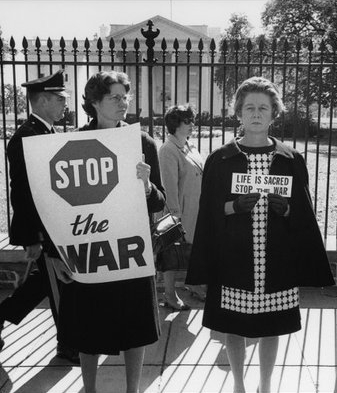
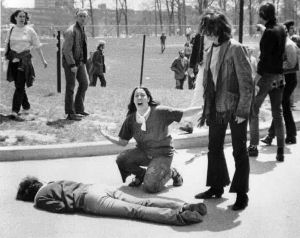


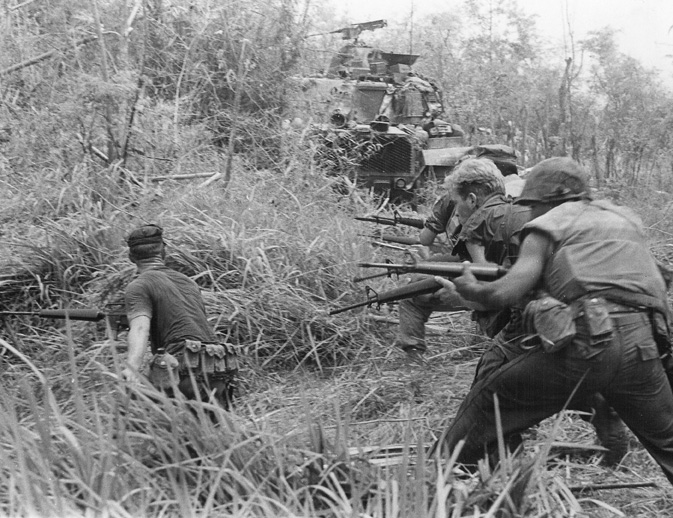
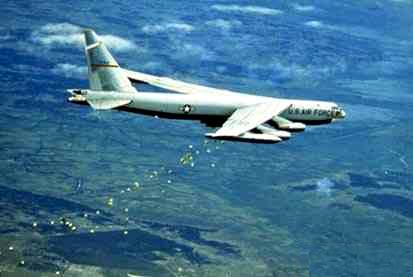
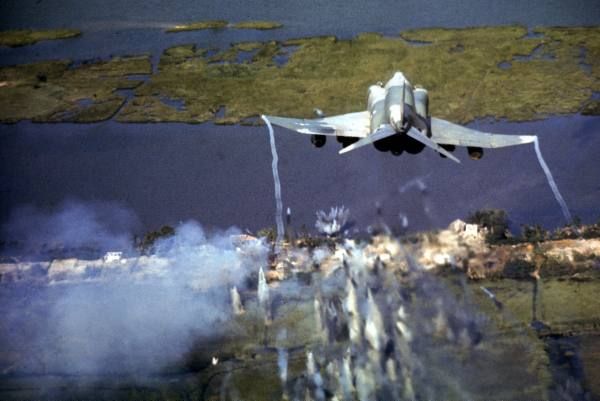
 Tuon remmiopelin jälkeen ei hullukaan ole halunnut ns. tasaiselle jenkkien kanssa. Se oli sellainen "Alaska opettaa"-tapahtuma.
Tuon remmiopelin jälkeen ei hullukaan ole halunnut ns. tasaiselle jenkkien kanssa. Se oli sellainen "Alaska opettaa"-tapahtuma. 